Do you have a question about the Fujitsu AOU36RLAVM4 and is the answer not in the manual?
| Refrigerant | R410A |
|---|---|
| Compressor Type | Inverter |
| Cooling Capacity | 36000 BTU |
| HSPF Rating | 9 |
| Voltage | 208/230V |
Essential reading, hazard symbols, seeking help, and installation disclaimers.
Critical safety advice for wiring, unit transport, and installation environments.
Specific safety precautions and guidelines for using R410A refrigerant.
Details on R410A tools, accessories, combinations, optional parts, and measurement units.
Guidelines for choosing a suitable and safe installation site.
Specifies required clearances for ventilation and maintenance around the unit.
Space requirements for single, multiple, and multi-row outdoor unit installations.
Procedures for safely transporting and securely installing the outdoor unit.
Details on system layout, refrigerant limits, and maximum piping lengths.
Guidance on selecting appropriate piping materials and diameters for R410A systems.
Methods to protect refrigerant pipes from moisture and damage.
Brazing techniques and essential precautions using nitrogen gas.
Connecting refrigerant pipes to separation tubes and headers.
Instructions for creating openings in the unit for piping and wiring installations.
Procedures for connecting refrigerant pipes, including flaring, bending, and valve handling.
Critical safety instructions and warnings for performing electrical wiring.
Preparing wire entry points and selecting appropriate power cables and circuit breakers.
Specifications, rules, and diagrams for communication transmission line wiring.
General wiring methods and connection diagrams for power, transmission, and control.
Step-by-step wiring procedures and details on external input/output terminals.
Functions of external input and output terminals for unit control and status.
Accessing and configuring field settings using switches and DIP switches.
Setting network termination resistors and refrigerant system addresses.
Configuring operational parameters using push buttons on the PC board.
Setting temperature boundaries, operational modes, and capacity priorities.
Setting addresses for signal amplifiers/indoor units and checking transmission cable resistance.
Procedures for leak testing refrigerant pipes and evacuating the system.
Steps for calculating and adding refrigerant to the system.
Insulating refrigerant pipes and sealing openings with putty.
Verifying correct indoor unit connections and performing the check procedure.
Pre-checks, understanding error displays, and performing test runs.
Explanations of LED status codes for normal operation and system errors.
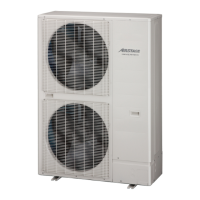
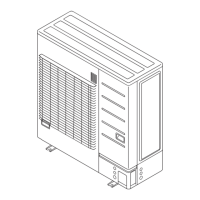
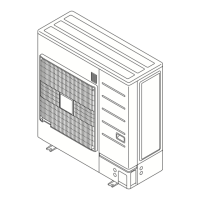


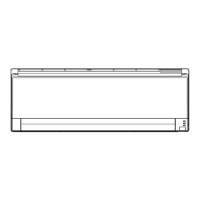
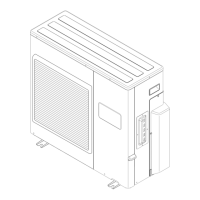





